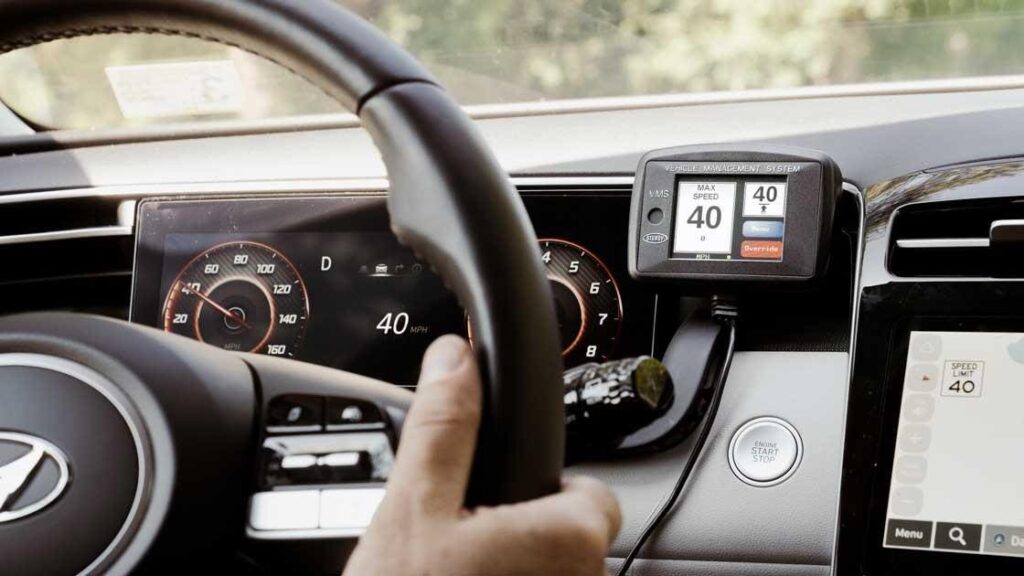According to a new study by the Insurance Institute for Highway Safety, most drivers … [+]
Despite an increase in road fatalities caused by over-accelerating, a majority of drivers say they would be open to technology aimed at preventing or reducing speeding, according to a survey released Wednesday.
At the same time, at least one major automaker is studying why some drivers drive faster than others and how to mitigate that incentive.
More than 60% of drivers surveyed by the Insurance Institute for Highway Safety said they would be okay with an audio or visual signal when they exceeded the speed limit.
Additionally, more than half said they wouldn't mind a harder accelerator pedal or automatic speed limits. According to the IIHS, this technology, called “intelligent speed assistance,” or ISA, uses GPS and a speed limit database, sometimes combined with a camera that can read posted signs, to identify and adapt to the actual speed limit.
More than 80% of 1,802 drivers surveyed agreed or strongly agreed that they would like the ability to see the current speed limit, and more than 70% said they would prefer an “annoying sound” warning over technology that automatically adjusts speeds when exceeding the speed limit.
“These survey results are exciting because they show that American drivers are willing to change the way they drive to make our roads safer,” IIHS Chairman David Harkey said in a statement. “Conventional wisdom has until now dictated that speed-limiting technology would be unacceptable in our car-centric culture.”
The urgency to reduce speeding comes as federal statistics for 2022, the most recent data available, show that speeding caused 12,151 deaths that year, with speeding a factor in 29% of all traffic fatalities.
While the IIHS findings are encouraging, worrying attitudes among drivers are hindering any reduction in speeding.
Survey participants were divided into three groups to measure attitudes regarding different levels of ISA.
Advice only: ISA that provides only advice tones or messages
Accelerator feedback: The accelerator becomes harder to press.
Acceleration Limit: Acceleration will be limited if you exceed the speed limit
Sixty percent of the advice-only group said they would be fine with ISA switching on automatically when they started driving, but about half of the drivers in the accelerator feedback and speed limiter group said they frequently disable the feature.
“We can no longer pretend that this is an insoluble problem,” Ian Reagan, IIHS senior research scientist who designed the study, said in a statement. “With today's technology, we can prevent virtually all speeding and eliminate speeding tickets. But with adaptive cruise control and partially automated systems that allow drivers to lock in their speed at 90 mph if they so choose, we appear to be moving in the opposite direction.”
Why drivers speed and how to slow down are the subject of recent research at Toyota Motor Corp.'s Joint Safety Research Center in Ann Arbor, Michigan.
“If we can understand the motivations, we may be able to implement incentive-related countermeasures that are more acceptable to people and that lead to safer driving,” lead scientist Josh Domeyer said at a press conference at the CSRC last week.
The study, conducted in partnership with Touchstone Evaluations and using data from the University of Michigan Transportation Institute, found that the motivation for stomping on the gas pedal isn't just a desire for speed.
Studies have shown that the length of time a driver has been idling, the likelihood of being stuck in rush-hour traffic, the speed of other vehicles, and the time of day are all major factors in determining whether or not a driver will speed.
While the IIHS study showed that ISA could help curb speeding, Toyota's research suggests that more subtle warnings that activate when the technology predicts a driver is about to exceed the speed limit could be more effective than automatic speed limits.
“There may be visual warnings or a police officer in the rearview mirror,” said Linda Angell of Touchstone Evaluations during a media briefing, “but if you know a little bit in advance that a driver is about to speed, and you know the type of driver they are and what circumstances they're in when they're driving, then maybe you can intervene in new ways.”
One of the new methods Angell announced was a recorded voice advising drivers not to worry about being late: “If you drive the posted speed limit, you will arrive on time. There's no need to rush.”
“The idea is to give drivers a choice,” Angell said.
Certainly, the technology exists to do so, but as IIHS's Ian Regan argues, the technology needs to be available and used.
“This technology allows for nuanced interventions that weren't possible before,” Harkey said. “The next challenge is to get automakers and drivers to adopt this technology and start saving lives.”

